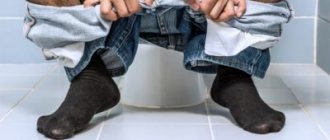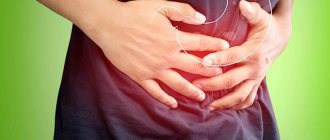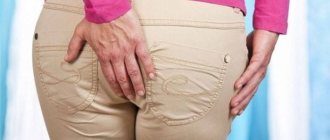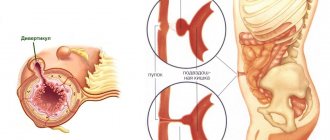Tenesmus is a pathological condition characterized by the appearance of the urge to have a bowel movement, but the act of defecation does not occur. Such problems can occur in various diseases. It is extremely important to identify them in a timely manner in order to eliminate the problem and avoid serious complications.
The principle of tenesmus
False urge to defecate occurs with increased innervation of the muscle tissue of the intestine surrounding the muscles. Due to excessive excitability of the autonomic nervous system, smooth muscle spasm develops. The muscles of the intestines, pelvis, and perineum are involved in this process.
Rectal tenesmus is accompanied by severe pain. They intensify with each new attack and decrease after bowel movement.
Traditional medicine in the fight against frequent urges
If a person goes to the toilet in small portions, and bowel movements are not complete all the time, you can turn to recipes from grandma’s chests. Thus, fans of traditional medicine advise using the following techniques:
- administering enemas with a weak solution of potassium permanganate;
- cool baths with chamomile infusion;
- You can also take a decoction of watermelon rinds: to do this, 100 grams of dried rinds must be boiled in a liter of water, after which the liquid must be filtered and taken orally cold;
- Bran, which can be brewed with a glass of milk or water, is an excellent remedy for constipation;
- Goat milk also has similar properties, which must be taken daily for breakfast for 30 days.
It is impossible to give yourself completely to the power of traditional medicine, since instead of bowel movements, a person may only experience a deterioration in general well-being. Such techniques are advisable only after a final diagnosis has been made. It is important to know what exactly the patient is being treated for, and only then move on to home procedures.
If severe pain does not leave a person even with intensive treatment, he should try taking soothing baths with chamomile infusion. It is believed that chamomile eliminates even the most serious pain and temporarily relieves unpleasant spasms.
There are some processes going on in the rectum all the time, and sometimes a person has to deal with constipation or, conversely, too frequent urges to go to the toilet. It is useless to fight this until the source of the problem is identified and completely eliminated.
Symptoms
The clinical picture largely depends on the cause of the urge to go to the toilet, mostly without bowel movement. At the same time, the lower abdomen hurts. The pain syndrome persists for a long time.
The following negative changes are also possible:
- feeling of a full stomach;
- excessive gas formation;
- rumbling in the stomach;
- rise in temperature;
- migraine;
- dizziness;
- nausea;
- gagging;
- sudden change from constipation to diarrhea;
- general increasing malaise;
- loss of appetite;
- feces with pus and blood.
The formation of cracks and erosions in the anal area is also possible. In this case, minor rectal bleeding is noted.
Treatment of tenesmus
Treatment for tenesmus depends on its severity and underlying cause. According to a 2021 study of people with colorectal cancer, a combination of different treatments may be needed to manage symptoms.
Inflammatory bowel disease
Treatment for IBD is aimed at relieving symptoms, achieving and maintaining remission, and preventing any complications. The most common treatments for UC and CD include:
- Anti-inflammatory drugs. Taken orally or rectally to reduce inflammation and help achieve or maintain remission.
- Immunosuppressants. Inhibits the immune system response that causes inflammation.
- Hormones. Rapid-acting systemic steroids to treat exacerbations of IBD by causing immunosuppression and reducing inflammation.
- Biological therapy. A subclass of immunosuppressants that target substances in the body that cause inflammation.
- Antibiotics. Used against bacteria that may cause or worsen IBD symptoms.
- Laxatives. Designed for those who have tenesmus associated with constipation.
- Antispasmodics. They are used as an addition to other medications to relieve pain.
Surgical intervention for tenesmus can be used to widen the intestinal passage, as well as in cases where conservative treatment of IBD is impossible due to the lack of positive dynamics in the therapy provided.
Violation of peristalsis
Any abnormal movement of food or waste in the digestive tract may be considered a bowel motility disorder. Diarrhea and constipation are the two most obvious signs of abnormal bowel movements.
Tenesmus associated with infectious diarrhea can be treated with antibiotics or antiparasitics to kill the bacterial or parasitic infection. If certain foods or medications are causing your diarrhea, your doctor may recommend limiting those items in your life as much as possible.
Constipation, which causes tenesmus, can be treated with laxatives and dietary adjustments so that stool moves more easily to the “exit.” In special cases, your doctor may recommend a cleansing enema.
Treatment of other causes of tenesmus
Tenesmus caused by other diseases, such as cancer or a sexually transmitted infection, may resolve after the underlying condition is treated. Doctors must tailor treatment plans based on each patient's unique needs.
Causes of pathology
The urge to defecate without feces occurs with increased excitability of the nervous system.
There are many reasons for such problems:
- infectious diseases;
- proctological pathologies;
- inflammatory process in the intestinal area;
- frequent digestive poisoning;
- diseases of the nervous system;
- exposure to stress;
- excessive psycho-emotional stress;
- the presence of neoplasms in the pelvic area;
- sedentary lifestyle.
Constant urge to defecate
With diarrhea or an intestinal infection, the urge occurs suddenly and continues to bother the person for 2-3 days. However, there are cases when the urge to defecate does not disappear over time. A person may suffer from unpleasant sensations for a week, or even a month.
The most common cause is irritation and inflammation in the rectum. It occurs due to an incorrectly administered enema or frequent practice of anal sex. Abuse of laxatives, the presence of inflamed hemorrhoids - all this can cause regular urges that cannot be controlled. It is not difficult to notice the progress of the problem, because it is usually accompanied by the following symptoms:
- involuntary bowel movement;
- severe pain in the anal area;
- the appearance of blood and mucus in the stool.
The last sign is especially dangerous, because it indicates an extreme stage of development of the problem. If the frequent urge to defecate due to advanced hemorrhoids or a serious intestinal infection does not stop, a person may in the future face global complications that will have to be eliminated surgically.
Pathology in various diseases
This unpleasant symptom often signals the development of serious diseases. Similar problems are observed with hemorrhoids, dysbiosis, irritable bowel syndrome and a number of other diseases.
Haemorrhoids
With this pathology, the rectum is affected. The development of the problem is caused by varicose veins and their protrusion into the intestinal lumen.
With hemorrhoids, a false urge to go to the toilet is not always observed. Their occurrence is explained by the addition of a secondary infection.
Irritable bowel syndrome
With IBS, pain occurs in the abdominal area. Abnormal bowel movements are also possible. Painful tenesmus is often observed. The appearance of such problems is often provoked by constant stress, poor nutrition, and hormonal imbalance.
Dysbacteriosis
Intestinal tenesmus is often observed with dysbacteriosis. The development of pathology is caused by the penetration of pathogenic microorganisms into the gastrointestinal tract.
The following changes are noted:
- abdominal pain;
- chronic diarrhea;
- the presence of streaks and blood clots in the stool.
Autoimmune diseases
Among the autoimmune pathologies that can provoke the appearance of tenesmus are Crohn's disease and ulcerative colitis.
The inflammatory process develops due to insufficient activity of the immune system . There is a sharp decrease in weight, a lack of iron, vitamins, and microelements in the body.
Causes of tenesmus
The appearance of painful spastic contractions of smooth rectal muscles and perineal muscles, accompanied by an imperative urge to defecate, often develops with various acute and chronic inflammatory diseases of the gastrointestinal tract and urogenital pathology. Tenesmus can occur with tabes dorsalis as one of the manifestations of tabetic visceral crisis. Unpleasant sensations in the anus are sometimes associated with partial strangulation of the hernia.
Diseases of the rectum
Pain, burning and urge when the anal area is affected are associated with increased sensitivity of the rectal membranes to irritants. In such a situation, the ingress of even a small amount of feces or mucus causes sharp spastic muscle contractions. Violation of the coordinated contraction of the anal sphincters leads to retention of contents and the appearance of severe pain. Among the causes of tenesmus are:
- Proctitis
. Inflammatory damage to the rectum occurs with pronounced dyspeptic symptoms, the main of which are false urges, discomfort and itching in the anal area. Pain is associated with constant irritation of the mucous layer and the influence of pro-inflammatory mediators. Proctitis is characterized by the release of a small amount of mucopurulent rectal contents. - Rectal prolapse
. Tenesmus, which develops due to displacement of a section of the intestine beyond the external anal muscular sphincter, is provoked by mechanical irritation of the mucous membrane and compression of the intramural ganglia in the thickness of the rectal wall. In this condition, there is sharp pain in the anus and perineum, a feeling of incomplete emptying after defecation, and a sensation of a foreign body. - Anal polyp
. The urge to defecate occurs only when the size of the benign neoplasm is impressive. Tenesmus is caused by constant pressure and irritation of nerve receptors on the surface of the rectal mucosa. Painful sensations are sometimes accompanied by the release of a few drops of blood during bowel movements, alternating constipation and diarrhea. With a long course of the disease, signs of anemia appear. - Anal fissure
. Rupture of the mucous membrane of the lower rectal sections is manifested by severe pain that occurs during defecation, and may also be accompanied by tenesmus. False urges are caused by the presence of an organic defect in the intestinal wall and a change in the mechanisms of reflex regulation of the act of defecation. With an advanced version of anal fissure, patients are bothered by constant severe pain radiating to the perineal area.
Acute intestinal infections
The development of painful sensations preceding the act of defecation is characteristic of all microbial or parasitic invasions that involve the intestinal mucosa in the process. Pain appears due to the influence of microbes on the intramural autonomic nerve plexuses, which regulate the intensity and sequence of contraction of the smooth muscles of the colon, sigmoid, and rectum. The occurrence of tenesmus is often associated with intestinal infections such as:
- Dysentery
. The disease occurs with damage to the entire large intestine, the formation of ulcers and erosions of the mucous membrane. Dyspeptic syndrome is the leading one in the clinical picture; painful tenesmus is detected against the background of diffuse abdominal pain, nausea and vomiting. Feces during dysentery quickly lose their fecal character, and a small amount of mucus and blood mixed with pus are released from the anus. - Salmonellosis
. Tenesmus is an important sign of the gastroenterocolitic variant of the disease, in which all parts of the digestive tract are affected. Patients also experience diffuse abdominal pain and cramps, nausea, and repeated vomiting. During defecation, a small amount of feces with inclusions of mucus and blood streaks is often released. - Intestinal form of plague
. This form of plague has a severe course, accompanied by a significant deterioration in general condition and severe symptoms of intoxication. Patients complain of sharp, unbearable pain along the intestines and high fever. Spasmodic contractions of the rectal muscles cause intense tenesmus. Other dyspeptic disorders are also typical: nausea, vomiting, diarrhea. - Protozoal infections
. Two diseases occur with predominant damage to the colon and the occurrence of tenesmus - amoebiasis and balantidiasis. With amebiasis, after painful urges, scanty stool is observed in the form of a mucous mass with inclusions of blood (“raspberry jelly”). With balantidiasis, painful urges are combined with scanty bowel movements consisting of feces, mucus and blood. - Parasitic infestations
. Severe colitis with abdominal pain, painful contractions of the rectal muscles, and other dyspeptic symptoms may indicate cavitary myiasis. This disease develops when fly larvae are ingested. Gastrointestinal disorders are common symptoms of chronic schistosomiasis. Tenesmus is often combined with constipation, pain, and decreased appetite.
Chronic bowel diseases
Long-term inflammatory and destructive processes in the intestines inevitably lead to the appearance of unproductive, painful urges to pass feces. Tenesmus develops as a result of disturbances in nervous regulation, which normally realizes its effects through the autonomic ganglia. The condition is aggravated by the destruction of the intestinal mucosa and the appearance of pathological discharge, leading to constant irritation of the rectum. Complaints of tenesmus include:
- Diabetic enteropathy
. Dyspeptic symptoms in patients with diabetes are associated with polyneuropathy, in which damage to the autonomic nerve plexuses of the intestinal wall is observed. Tenesmus is more common at night; patients note increased frequency of stools and changes in the consistency of stool. In severe cases, painful urges may develop in combination with intestinal pseudo-obstruction. - Crohn's disease
. Painful contractions of the rectal muscles and anal sphincters are more often observed in advanced forms of the disease. At this stage, patients develop anal fissures and rectal fistulas, through which blood and mucus are released. Tenesmus is usually combined with paroxysmal pain in the right iliac region, nausea, vomiting, and severe weight loss. - Nonspecific ulcerative colitis
. Tenesmus, as a rule, occurs with ulcerative-destructive lesions of the distal parts of the large intestine. Painful urges are associated with the presence of deep defects in the mucous membrane, disorders of innervation and coordinated work of muscle sphincters. Ulcerative colitis is manifested by sharp paroxysmal abdominal pain, scanty bowel movements, and bleeding from the anus. - Chronic colitis
. Pathological urges to pass stool are potentiated by the influence of three factors: bacterial damage to the colon wall, disorders of local immunity, and incoordination of muscle contractions in different parts of the intestine. The most pronounced unpleasant symptoms are with sigmoiditis and left-sided colitis. Tenesmus is combined with cramping pain in the lower abdomen, scanty bowel movements mixed with blood. - Radiation sickness
. Radiation damage to the intestines develops during simultaneous exposure to high doses of radiation and is manifested by dyspeptic symptoms: vomiting, severe abdominal pain, diarrhea. In severe situations, when the cells of the intestinal wall die, painful tenesmus without stool discharge is observed, which is often accompanied by rectal bleeding.
Volumetric neoplasms of the intestine
The development of painful contractions of the intestinal muscles and false urge to go to the toilet in tumor formations is associated with two main reasons: mechanical obstacles to the movement of feces and the germination of tumor tissue into the nerve plexuses of the intestine. With benign neoplasms, the general condition of patients suffers slightly; with malignant tumors, a large complex of extraintestinal pathological symptoms is observed. The most common types of formations in the gastrointestinal tract, in the clinic of which tenesmus is observed, are:
- Anorectal melanoma
. The initial sign of the disease is the appearance of bright red blood on the surface of the stool during bowel movements. As the formation progresses, other signs are also noted: pain in the anus, sensation of a foreign body in the rectum. The cause of painful contractions of the rectal muscles is constant irritation of the mucous membrane and a mechanical barrier to the movement of feces. - Colon adenocarcinoma
. Initially, the tumor has no specific signs and is manifested by dull pain in the abdominal cavity and periodic dyspeptic disorders. As the formation increases, tenesmus is observed associated with partial blockage of the lumen of the colon. Patients are concerned about the passage of small amounts of dark blood in the stool. In severe cases, bleeding from the gastrointestinal tract occurs. - Intestinal polyps
. These neoplasms are benign; unpleasant symptoms are mainly caused by the existence of a mechanical obstruction to the movement of feces and partial intestinal obstruction. Dyskinesia of different parts of the colon is detected, accompanied by a false urge to go to the toilet. Pseudopolyposis of the colon has a similar clinical picture.
Urogenital pathology
The appearance of unpleasant symptoms from the digestive system with lesions of the genitourinary tract is due to the proximity of these organs, general innervation and the presence of pathological viscero-visceral reflexes. Painful sensations are often poorly localized; patients describe them as diffuse pain in the pelvic area. The following urogenital diseases most often lead to the appearance of painful tenesmus:
- Acute prostatitis
. With purulent inflammation of the prostate gland, sharp pain occurs in the pelvic cavity, which radiates to the sacrococcygeal area and rectum. Severe pain syndrome causes pathological spasm of the anal sphincters, which leads to the impossibility of defecation and tenesmus. The disease is always accompanied by dysuric disorders. - Injuries to the genital organs
. When the perineal area is damaged, combined injuries often occur involving nearby anatomical structures. Hematomas and ruptures of the mucous membrane lead to increased irritability of the rectal walls, sharp pain and fecal retention, which is accompanied by a false painful urge to defecate. - Renal colic
. The first sign of the disease is a sharp, cramping pain in the lumbar region, which can radiate to the leg, perineum or anorectal area. The development of tenesmus is caused by a reflex spasm of the entire smooth muscle of the intestine in response to a strong painful stimulus during an attack of renal colic. The condition is accompanied by anuria, vomiting, and tachycardia. - Diseases of the uterus
. Painful contractions of the rectal muscles more often occur with uterine-intestinal fistulas, through which purulent contents enter the rectum and have an irritating effect. Tenesmus and chronic constipation are sometimes a symptom of malignant tumors of the uterus that are located close to the intestinal wall or grow into it.
Purulent inflammation
For abscesses of the abdominal cavity and pelvis, general manifestations are more typical: hectic fever, nausea, tachycardia. Against the background of general intoxication, intense pain occurs in the abdominal area, which intensifies with changes in body position. False urges to defecate develop secondarily as a consequence of reflex irritation of the walls of the rectum and sigmoid colon. With abscesses of the pouch of Douglas, tenesmus can be combined with incontinence of stool and intestinal gases.
Tenesmus in a child
The digestive system in children is not yet fully developed. In the acute course of pathologies of the lower gastrointestinal tract, tenesmus is often observed.
In addition to the imaginary urge to defecate, cramping pain is noted. Stool is often completely absent, but if present, it can change consistency. It contains admixtures of mucus and blood.
At an early age, the child experiences the following changes:
- loud crying;
- redness of the facial skin from straining when trying to empty the intestines.
Diagnostic features
A proctologist should determine the main diagnosis. Sometimes adult patients with tenesmus are referred to neurologists and gastroenterologists. During the examination, the doctor interviews the patient, prescribes tests and instrumental examinations.
For laboratory diagnosis of tenesmus, the following tests are prescribed:
- General and clinical blood test to assess hemoglobin and red blood cells, as well as ESR and leukocytes, to find out about the presence of an inflammatory process,
- A coprogram is necessary for examining stool, identifying in it the remains of undigested food, uncharacteristic substances, for example, pus,
- Bacteriological culture of stool to determine whether it contains pathogenic bacteria.
An examination by a proctologist involves a digital examination of the intestines through the anus. The doctor evaluates the tone of the rectal muscles during tenesmus, determines how mobile and intact the mucous membrane is, and finds out whether there are hemorrhoids. If there is insufficient data after palpation, colonoscopy or sigmoidoscopy may be prescribed.
Visual examination of the intestinal mucosa is performed using a sigmoidoscope, a device equipped with lenses and a light source. Colonoscopy is performed using a special thin probe. During the procedure, the doctor can examine areas of the small intestine as accurately as possible and determine the presence of neoplasms, polyps, tumors or ulcers.
In addition to the described diagnostic methods, the patient is prescribed an ultrasound of the gastrointestinal tract.
Diagnostic methods
In order to identify the cause of tenesmus, you should seek help from a gastroenterologist.
You may need consultation with other specialists:
- infectious disease specialist;
- oncologist;
- proctologist
The doctor conducts an examination and finds out the following points:
- when the symptoms appeared, their frequency, duration;
- lifestyle, diet of the patient;
- presence in the anamnesis of gastroenterological, proctological pathologies, disorders in the activity of the central nervous system.
The following diagnostic measures are carried out:
- general tests of stool, urine, blood;
- stool test for occult blood;
- biochemical detailed blood test;
- ultrasound examination of the abdominal cavity;
- colonoscopy;
- anoscopy.
Diagnostics
People experiencing constant imperative urges are examined comprehensively, in several stages, so that the doctor can diagnose the true cause of these manifestations. To identify concomitant diseases, the patient undergoes an ultrasound of internal organs - bladder, prostate, kidneys. Next, a urine test, sediment, and culture are examined for sterility; the doctor conducts a physical examination (including a general examination and palpation).
The diary of the patient's urination is studied, on the basis of which conclusions about the diagnosis can also be drawn; OAB is diagnosed if there are more than eight urinations per day and more than one per night. To identify the causes of hyperactivity, cystometry (measurement of bladder volume), tests with water and Lidocaine are performed - a technique used to exclude neurological causes affecting the functions of the detrusor (bladder muscle).
Therapy methods
Treatment involves taking medications and following a diet. Traditional medicine recipes are effective.
Drug treatment
It is possible to get rid of unpleasant symptoms with the help of medications.
The choice of drug depends on the cause that provoked the appearance of tenesmus:
- Intestinal infections. Medicines that have an antibacterial effect are prescribed. The most commonly used are Nifuroxazide and drugs from the enterosorbent group (Enterosgel, Sorbex).
- Proctitis, colitis. Sulfonamides are used.
- Hemorrhoids, anal fissures. Anti-inflammatory, wound-healing, softening ointments, suppositories (Methyluracil, Ultraproct, Proctosan), and medications that improve blood circulation (Detralex) are used.
- Diarrhea. Loperamide and Imodium are prescribed.
- Flatulence. Espumisan is used.
- Constipation. Mild laxatives help solve the problem: Lactulose, Duphalac.
The sedatives Alora, Novo-Passit, and valerian tincture are used.
The following remedies will help remove the urge and eliminate pain:
- No-Shpa;
- Papaverine;
- Duspatalin;
- Hyoscytamine;
- Dicyclomine.
Warm vegetable oil is used for microenemas.
Diet
To eliminate tenesmus, it is important to properly organize your diet. Pickles, smoked meats, spices, as well as fried, hot, cold, spicy dishes are excluded from the menu. The food is steamed or boiled.
During the treatment period, split meals are recommended. You need to eat in small portions, but often.
You should avoid the following products:
- fatty meats;
- cabbage;
- baking;
- legumes;
- canned food;
- sweets;
- alcoholic drinks.
If you are prone to constipation, preference should be given to:
- pumpkin;
- beets;
- freshly squeezed juices;
- decoctions based on dried fruits;
- bran bread;
- fermented milk products.
It is allowed to include soups, cereals, boiled and stewed lean meats, and fish in the menu.
Traditional medicine
Sitz baths using cool infusions of sage, marigold, and chamomile have a good effect. Microenemas with a decoction of St. John's wort, chamomile, and sea buckthorn oil have a positive effect. With their help, it is possible to eliminate inflammation and irritation.
Herbal teas are recommended to help relieve spasms.
The following plants are used for their preparation:
- chamomile;
- valerian;
- oregano;
- Melissa;
- sweet clover;
- motherwort;
- mint.
Chamomile infusion has a calming tonic effect. To prepare it, 1 tbsp. raw materials are poured with a glass of boiling water and left for an hour. Then filter the liquid and drink 75 ml three times a day.
Doctors' advice
Having told the doctor that bowel movements are irregular, a person usually expects to receive a list of medications for treatment. However, the easiest way to eliminate the problem is with a competent and balanced diet. What is the diet for frequent urges?
- Fatty and spicy foods are removed from the diet.
- You will have to avoid pickled foods, as well as fast food.
- Experts recommend
eat more vegetables and fruits, as they can prevent the development of constipation. - You cannot ignore your drinking regime: during each meal you need to drink 300–400 ml of water.
- You will also have to give up dairy products, giving preference to cereals, soups and salads.
Doctors recommend eating in portions, eating no more than 200–300 grams of any food at a time. Otherwise, the urge to defecate will not disappear, continuing to terrorize the patient. If you are prone to constipation, you should include dried fruits and legumes in your diet.
As for medications, doctors do not always prescribe them. Typically, specialists turn to antibacterial and antiviral drugs, but here everything is individual and depends on the diagnosis. A person with an intestinal infection will not be able to take the same pills as a patient with a stomach ulcer.
If severe pain and spasms occur, you need to drink No-Shpu or Papaverine. It is believed that these drugs most effectively eliminate pain, without having a negative effect on the functioning of the entire body.
Your doctor may also advise
cold sitz baths that will soothe the smooth muscles of the rectum. If all the methods prescribed by a specialist turn out to be ineffective, you can always turn to folk remedies.
Preventive actions
Painful symptoms appear due to improper nutrition and unhealthy lifestyle. It is easier to prevent the appearance of tenesmus than to deal with its manifestations.
To this end, you must adhere to the following recommendations:
- minimize psycho-emotional shocks;
- avoid overexcitation;
- properly plan your diet;
- introduce a sufficient amount of fiber-rich foods into the menu;
- eat small portions, but more often;
- eat food warm;
- stop drinking alcohol, drugs, and smoking;
- engage in physical exercise, the load should be moderate;
- treat any diseases in a timely manner.
Clinical picture
In addition to the feeling of incomplete bowel movement, other symptoms are also noted. Their number, nature, and features of manifestation will depend on the underlying pathology. The most common complaints are:
- abdominal pain, often in the left groin area;
- flatulence (increased gas formation);
- constipation (less commonly diarrhea);
- pain and discomfort during bowel movements;
- feeling of constant intestinal fullness;
- nausea, rumbling in the stomach, loss of appetite;
- disturbance of sleep, attention, anxiety, irritability;
- bloody discharge from the anus during or after bowel movements (cancer, polyps, hemorrhoids);
- with a long course of the disease, symptoms of general intoxication (weakness, constant fatigue, etc.) are added.
Clinical manifestations
The main clinical symptom is a sharp pain syndrome, accompanied by an imperative urge to defecate . In this case, the pain is cramping in nature.
When attempting to defecate, no fecal discharge is observed or the patient experiences small amounts of feces that may contain mucus or blood. This phenomenon of contractions of the rectum without emptying the organ can cause cracks and erosions in its mucous membrane.
The intensity of pain varies significantly among individual patients - from mild to unbearable, in which the patient is forced to maintain a motionless body position.
Such a pain syndrome leads to a significant decrease in the quality of life and disruption of the normal functioning of the digestive system . The duration of the pain varies, but most often lasts for several days.
Patient examination
When a patient comes to the hospital with complaints of painful urge to defecate, the following diagnostic algorithm is used:
- Clinical examination of a person to identify concomitant diseases, as well as possible factors in the development of tenesmus. For this purpose, all complaints, the patient’s life history and the history of the development of the current illness are also collected.
- A general blood and urine test allows you to assess your general health and identify inflammatory processes in the internal organs.
- Anoscopy is a method of examining the rectum using a small endoscope. Allows you to assess the condition of the mucous membrane of the organ over a distance of 10-15 cm, which is enough to make an accurate diagnosis in most cases. This study is complemented by digital examination of the rectum.
- Colonoscopy is an endoscopic method of examining the large intestine, carried out using a special probe with a video camera. The procedure allows you not only to examine the intestinal mucosa, but also to take a biopsy or perform minor surgical operations if necessary. Colonoscopy is the “gold standard” for detecting colon diseases in patients of any age.
Interpretation of examination results should always be carried out only by a doctor, due to the risk of their incorrect interpretation. Based on comprehensive research, it is possible to quickly identify the causes of frequent bowel movements without diarrhea and select an effective approach to therapy.











